Steven Spohn On Strides In Accessibility For Gaming, And Nintendo’s Room For Improvement
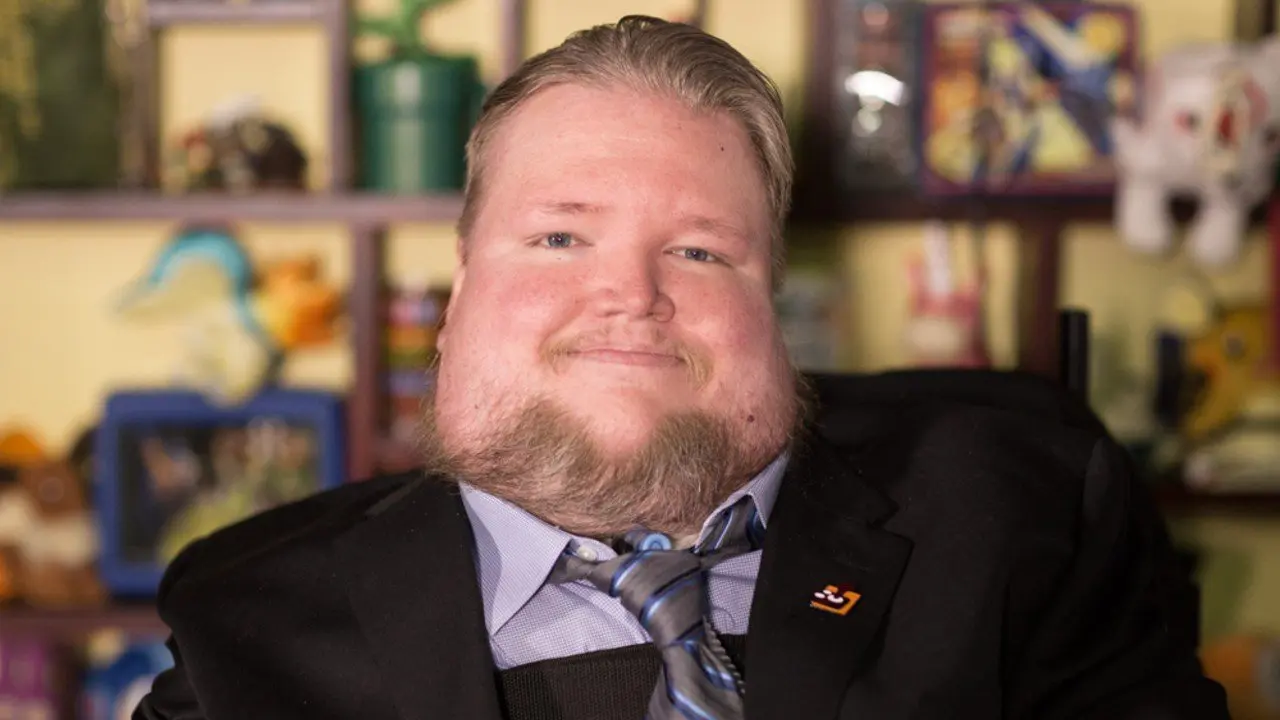
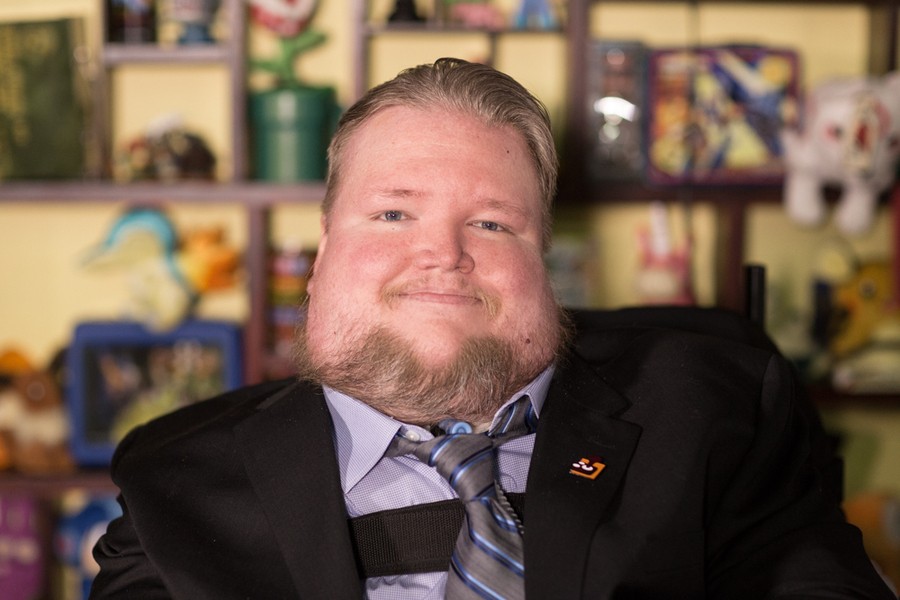
Earlier this year Steven Spohn hit an incredible fundraising landmark prior to his 40th Birthday; in forming alliances with a lot of creators and gamers globally, along with some welcome support from influential figures, he raised over one million dollars in less than a year and ahead of schedule. It was an indicator of the positives that can be achieved through social media and streaming platforms, a welcome antidote to the problems that can easily be found online. That money is providing a notable boost to AbleGamers, an organisation for which he serves as Chief Operating Officer.
AbleGamers is one of many organisations that addresses various challenges and areas around accessibility in gaming – ensuring those that have challenges playing games have the support and tools that are necessary. It’s a multi-faceted set of issues; areas to address can range from working towards physical controller and input solutions, to teaching developers how to deliver extensive accessibility options in games, right through to giving those in need avenues and communities in which to enjoy the social aspects of gaming.
Accessibility in gaming has also come a very long way; as you’ll see in the interview below Spohn believes it’s moved on from advocacy to action, which is a positive progression. You’ll often see extensive headlines when major new game releases go the extra mile in accessibility options, for example putting the related settings at the start of the first-time boot-up process, so those that need to make adjustments don’t need to access and dig through menus.
We largely spoke about how far things have come, but we did also get to Nintendo, too. When the Switch launched the company was criticised for its lack of features and accessibility; it’s improved in some respects through firmware updates, but is still arguably behind other platforms. Nintendo has given a response, however, so that perspective is also shared.
Below is the transcript of our interview, albeit lightly edited for clarity.
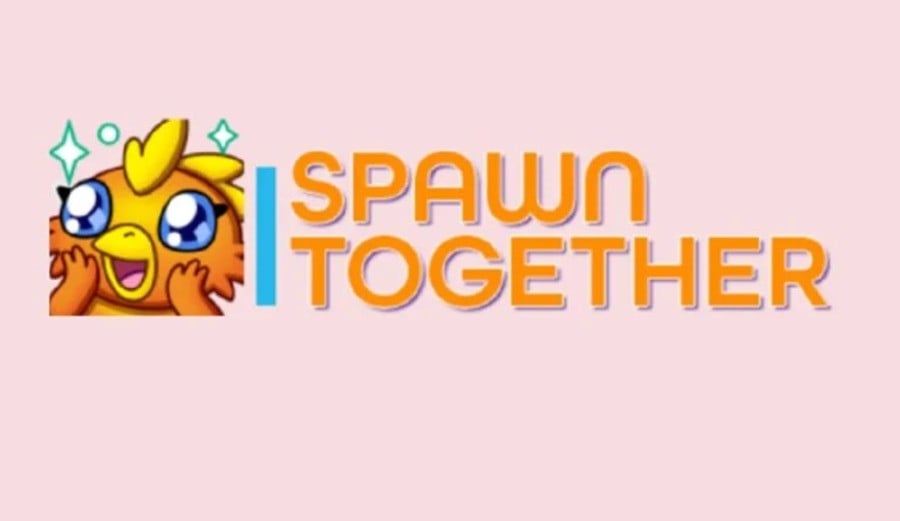
Could you talk about the origins of the Spawn Together campaign, and how confident you were of hitting the $1 million goal?
You know, much like the video I put on Twitter talks about, this was the height of the pandemic and I was just about to turn 40 years old. When you turn 40 years old society tells you that you’ve gotta do something big, like put on a perfectly good parachute and jump out of a perfectly good plane. That wasn’t going to happen in my case, and being an extremely disabled individual – I’ve got the powered wheelchair and the ventilator going on – there wasn’t anything I could do that was safe, even in the restricted small bubbles that they were advising. It was too risky for me to go out and do anything to celebrate.
So I kept thinking about the predicament, and for my 39th birthday I’d reached out to Dwayne Johnson, ‘The Rock’, and said “hey, do you want to be friends”. And I got through to him and we got to talk and that was cool, but that was a pretty high bar I set for myself at 39. So I thought, well, if this pandemic’s gonna get me then I’m going to go out swinging hard, to make sure something lives beyond me. I wanted to raise money for the charity that I’ve been trying to help get off the ground for 15 years, and really give it a good foundation to keep doing amazing things.
And, you know, it worked out really well. A lot of people answered within the first couple of days, we raised $180,000 within the first three days. Within the first month or so it got to $300,000, and it kept progressing from there. The originality of the event was just a thought in my brain. Everybody turns to big streamers, you know, ‘what are they raising money for?’. They have the large communities that can raise a million dollars, which is great, but what about the people who can only raise $100 or $200, or even $5, what about them? And I thought what if we can get all of them to get behind one single cause, and we saw the results.
If you set a bunch of people to the same mission, point them in the same direction, you can really move the needle for good. That’s what we did here. Did I think we’d get there? No, I did not. I really had no faith in myself that I could rally enough troops to get this done, and I have found in life that it’s way better to underestimate your potential and go in with “hey at least I tried”, that way you’re not disappointed if it doesn’t work out. But sometimes you take your shots and they land, and you can be happy when they do.
It seemed to be a campaign that captured the imaginations of many people. You talk about embracing as wide a community as possible, how important are those online communities to gaming as a whole but particularly the work you do, raising awareness and funds for AbleGamers?
The thing about working with content creators of various sizes is that you’re still dealing with people, who have things that they care about and want to support. It doesn’t really matter what their size is, though sometimes maybe the larger ones can get jaded because they’ve been offered a lot of deals, they’ve had people trying to take advantage of them. They might be on their guard because not everyone’s a good human being and they might have to protect themselves. That’s understandable for any size, we all want to have our wishes and boundaries respected.
But at the end of the day you just get through to them by showing what it is you’re trying to accomplish, whether raising money in my case for people with disabilities, or support children in hospital, or support people getting controllers at home, or supporting a dog charity, it doesn’t matter. What matters is you show content creators what you believe in, and some of them will come along because they believe in what you do as well. That’s a lot of what I did.
To their credit I spoke to several people who I consider friends and said “hey, I’m doing this”, and they said that’s great, good luck, but I’m not comfortable going out and raising money during a pandemic, I don’t want to ask people for money, maybe I can just send you a raid. Or hey I love what you do because I want to support things so dogs have a place to go because they’re getting kicked out of their homes. And it’s like “ok great, you support what you believe in”. I think a lot of the mixing and matching of creators is about finding who is interested in your cause and getting them banded together.
It’s nice to know that things do change as time goes on, and nowadays there’s not a week that goes by where somebody at AbleGamers does not have an email from a new publisher or developer who’s saying “I want to design accessibly, what do I do about this”.
In banding together so many people, is there a benefit in educating and enlightening more people about accessibility issues, and have you seen that happen more in recent years, and on streaming platforms / social media?
About 14 years ago, when AbleGamers was a very young charity, we went to GDC (Game Developers Conference) in America, and basically asked one question on a video camera. We set it up in the lobby in the middle of GDC and said “have you ever thought about designing for people with disabilities”. And we got a whole bunch of people who said “no”, a couple of people who said “yes”, and one dude who laughed at us and walked away.
Since then, we’ve made it our mission to continue raising awareness, and continue making people more aware of the importance of including that audience. There are 56 million peoples with disabilities in America alone, 7 million in Canada, and the numbers continue to climb from there. Those people needed support, they needed champions advocating for them in the gaming space, and that was part of what AbleGamers does.
Now there are a lot of advocates out there, people not affiliated with AbleGamers who are also doing great advocacy. What we’re seen is the tide shifting. I told you an instance of a developer laughing and walking away, but if we did that same video interview today I guarantee you that not one person would laugh and almost nobody would say they hadn’t at least thought about how to do accessibility. It’s changed in that time, it’s a different gaming world now.
It’s actually kind of interesting, to be a bit older and see the world change like that, it’s kind of fun. It’s nice to know that things do change as time goes on, and nowadays there’s not a week that goes by where somebody at AbleGamers does not have an email from a new publisher or developer who’s saying “I want to design accessibly, what do I do about this”. It’s a big change, it’s gone from us having to hunt people down to having developers come to us.
We were looking at the work you do, and it’s interesting that you offer both practical support but also helping people to connect socially. To start with the social aspect, how has that grown and evolved with the change in attitudes?
What we say with AbleGamers is that we’ve moved from advocacy to action. We originally were all about advocacy, convincing the gaming world that people with disabilities mattered and existed, stop ignoring and placating. To changing to action.
We’ve largely thrown up the aircraft carrier banner saying “we did it”, with the thanks of a lot of advocates around the world. We can’t go far in video games now without seeing something about accessibility, it’s out there and people who are not using accessibility is doing so purposefully. There’s no-one out there can say they haven’t heard of it. That’s just not a thing any more, so the advocacy is done.
Now we’re onto action, now we’re onto “this is a form of mental health, this is defeating social isolation, this is conquering the barriers of inequality, this is making sure that the quality of life for people with disabilities can be improved through these wonderful mediums of video games”. These are all things that both disabled and able-bodied gamers have in common, whether it’s that you’re able bodied and I’m not, it doesn’t matter. What matters is that you feel lonely sometimes, so do I, I want my quality of life to be better sometimes, so do you. It’s things we can both commonly agree that video games can provide for us, and help us, and we just want to make sure that everyone is included.
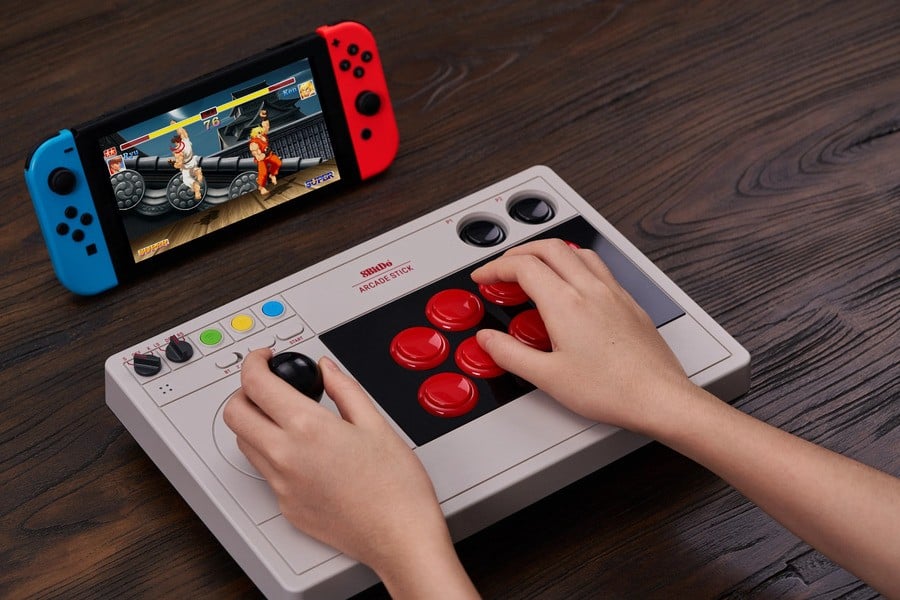
Can you perhaps give an example of a project or event that is designed around that social aspect, and the reaction you see out of those that take part?
Absolutely. Spawn Together was a great one but that wasn’t an AbleGamers initiative, that was just a Steve initiative! To speak to the programmes of AbleGamers, an example is our Expansion Packs. So, the Expansion Packs are where we take 10 to $12,000 of equipment, adapters, peripherals, swag from the game companies, and we go into a hospital or centre and we make a little room or corner that is a game zone where we go and have fun. The idea is that it’s a place to take people out of the hospital for a minute and just have fun.
We did this at a hospital just outside of New York called Helen Hayes. Now, Helen Hayes is a relocation hospital that mainly focuses on people that have been injured due to a fall or a traumatic event, and getting them back onto their feet. We went there and they had a rec room setup, we took over part of that and setup a whole bunch of gaming controllers. Including one where you use your eyes to control the entire gaming apparatus. So you stare at a screen with planet Earth and there are asteroids coming, and the only way to attack the asteroids is to use your laser beam eyes to blow them up.
It’s a really fun game and a lot of people had a good time, until the final day we were there we had gone outside to talk to some of the doctors and residents; the patients inside thought we were already gone, and they were into playing the games and not paying any attention to where we were. On the outside of the room a hush fell over us when we heard, from inside, three patients sort of chastising each other, like “haha, I did better than you” and so on. Sure enough, after listening to them for a few minutes they were setting up a tournament, competing against each other to see who could get the top score.
That right there is a great indication of how video games bring social contact almost by default. We think of games almost as an isolated sport but it’s not. Even if a game is single player a bunch playing the same game start comparing scores and stats, there’s that banter. That social output is really what this is all about. People consider AbleGamers a video game charity, but we’re not. We’re a humanitarian charity, we’re a disability charity, we’re not a video game charity. Video games are just the thing that we love and the tool that we use to allow people to combat social isolation.
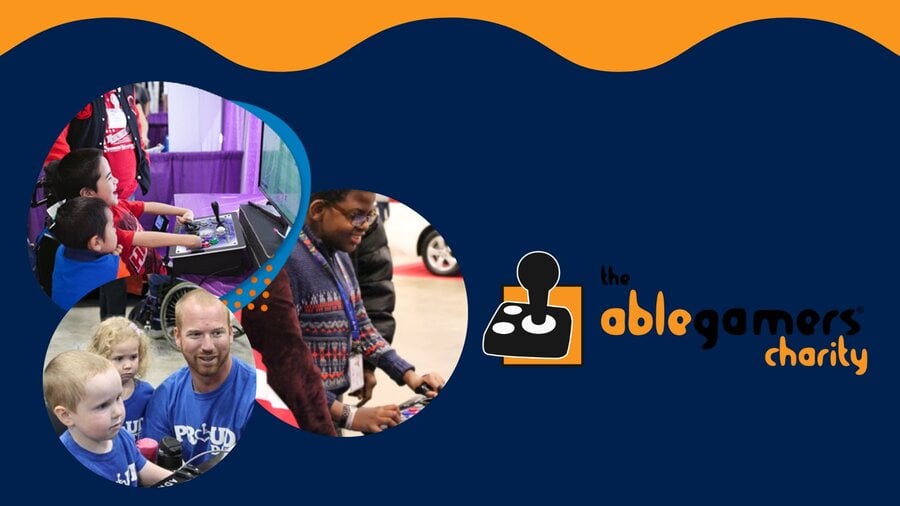
You’re talking about video games as a tool, which leads us to another key area. Can you talk about the development tools and resources that now exist, and how you work with studios to make games as accessible as possible?
There’s a lot of great things out there that AbleGamers came up with, that we’re very proud of. The number one and foremost is accessible.games. This is the website for accessible player experiences, or ‘APX’. APX is a course where you can go in and see how you design with disabilities in mind. It breaks it down to input and control patterns. So let’s say I’m a developer that really wants to make sure I’m including as many people as possible. I look on the website and look at some of the top things that people with disabilities need.
I can then think ok, instead of developing for various individual conditions like multiple sclerosis, ALS or others, I can instead look at a case like some people have problems getting their hand to co-operate to click on a certain button, which makes them click the wrong button. So we need a way to undo a mistake and let them do it again, let’s call it undo-redo, and then what if the game is bit rough and can’t be completed by someone because they have a physical limitation on how ‘good’ they can get. It’s not a challenge in the way of a skill, but that their body isn’t listening to the commands that the brain is giving like needing to move and shoot this person, or jump over a thing.
Well, the game can help. Let’s call that ‘helping hand’. And then we repeat this process, over and over and over until there’s a new language, and this language is something the developers can and are adapting. We’ve had over 250, at this point, accessible practitioners (which we call graduates of the class) who are coming through and can speak that language. So, if you and I are developers I don’t need to sit here and describe a disability, a person’s challenges and things they may or may not be able to do, I can just say to you “hey, just so you know our game has big undo-redo problem, there are just too many barriers to doing the same thing, and also the helping hand is failing”. You now understand in two sentences what would normally be a five minute block of text.
So now you can “oh cool, here’s some ideas”. Because, at the end of the day, AbleGamers is a charity that helps developers do things better in what they do. But we’re not developers ourselves, so we’re not telling developers how to develop. Gosh, we have a class every six weeks full of new, hopeful, bright accessibility practitioners, and when we give them workshops, when we give them tests like “here’s a space simulator game, there’s something wonky about it, what would you do”. It’s never the same answer twice, every single class has a different answer to solve the same problem.
That’s exactly what we want, we don’t want to tell developers how to develop things. The people on the internet saying “oh you’re trying to make games boring, so they’re all the same”, the answer is “no, we want the exact opposite!”. We want developers to figure out creative solutions to allow people of all abilities to enjoy those same wonderful virtual worlds.

Can you perhaps give an example of a game you’ve played recently that does these things particularly well?
Absolutely, I can give a good and bad example. Everybody knows Fortnite, where you like it or hate it you know about it. So you might think about Fortnite and think “well, that’s not a very accessible game”, and you’d be wrong. It actually has some of the most adaptive features of any video game title, especially in the shooter realm. It allows you to open doors automatically, they have secondary – what we call ‘second channel information’ – like when you’re near a treasure chest a little tiny symbol appears to tell you where it is in case you can’t hear it. There are modality adaptions, so if I’m pushing my mouse to walk forward and I get into a vehicle, the game automatically knows that I also need the forward motion of the car to do the right click as well, because I’ve changed it on the walking.
So these additional keybinds being remapped automatically is a beautiful thing. Having it as a more modular design allows us to control things with less buttons and less features on a controller, which again is often a problem for people with disabilities when there are so many buttons to push, and there are only so many abilities you have. You need to reduce that number as much as possible, so that kind of thing makes it great.
On the other side you have things like the new Dungeons & Dragons game that came out, Dark Alliance. When it was launched it didn’t even have button re-mapping, you couldn’t change the keyboard controller, the button layout, they were all locked in. In 2024, the year of our Lord 2024, no controller remapping, can you imagine? Yet they decided to do that as a feature.
And, you know, unfortunately for them people took them to task, they told them about it on Twitter, and yelled about it on Reddit and social media, and eventually they started hearing people and they’re going to put that in, so they say, but it’s too late. The game has launched and they’ve missed that opening window.
So some things, when you think about accessibility, are considered standard now. When you think about the DVD of your favourite movie right now, you know there’s going to be closed captioning, right? There is, because of course there is, it’s in every single movie. Same things with video games and remapping, of course there’s going to be remapping, so when there’s not it leads to a situation where people get upset. There’s the two ends of the spectrum where you have good, bad, and there’s everything in between.
Nintendo’s in that same realm, they really need to come along when it comes to accessibility. Nintendo is lagging behind the other big consoles and I think it’s a shame, because there are so many wonderful Nintendo titles that people just want to enjoy, whether it’s Super Mario or Zelda. We all know these are household names. And you want to be able to jump in and play with friends, no matter what console it is. So I hope that Nintendo starts stepping up and bringing accessibility to the plate too.
Nintendo is lagging behind the other big consoles and I think it’s a shame, because there are so many wonderful Nintendo titles that people just want to enjoy, whether it’s Super Mario or Zelda.
Nintendo says in its business that it has a philosophy of having as wide a gaming audience as possible, yet it seems to me – with a very inexperienced eye – to do relatively little in terms of accessibility. Do you feel that they’re open to improving this area, or have thoughts on the early steps they can take?
I wish I knew what happened with Nintendo, and why I cherish interviews with Nintendo-focused magazines and outlets the most. Because I want to continue to get more Nintendo players to be behind the cause of accessibility. I doubt at this point that there’s many out there reading this that are like “ew, accessibility, gross”. No, it’s not like that. So, why Nintendo continues to lag behind is a puzzle to me.
So, fact, for you, that a lot of your readers may or may not know. Nintendo was actually the first to come out with an accessible controller. Nintendo had this wonderful device that had a sort of horse shoe harness that you put around the back of your next, and you put a controller module – it was a big device – but it put a module up to your mouth where you could use your chin or lower lip to move a joystick and be able to control a video game, back then the original Nintendo / NES. Accessibility was early stages, of course, no-one wants to wear a metal harness to play a video game, but that was back in the ’80s when things were still new and engineers were figuring stuff out.
It’s really sad that back in the day Nintendo was at the forefront of accessibility, and at some point they just stopped. I don’t know, to this day, if that is a lack of care from the top brass, or whether someone at the company just doesn’t prioritise that. But, there are decisions that Nintendo and the developers it buys / publishes have made. For example in one of the more recent iterations of Pokémon you have a situation where one of the side quests is to put in a ‘hearing bud’, and that ‘hearing bud’ allows you to turn on closed captioning. And that’s kept in a sidequest. Why are accessibility options hidden beneath a sidequest, it shouldn’t be that way.
I don’t know why they’ve made those decisions, and all I can to is continue to encourage and implore Nintendo to care, and implore your readers to start getting after Nintendo. The only way Nintendo is going to decide to change that viewpoint is when enough of our Nintendo-loving people say “hey, this is important to me too, you need to take care of this”.
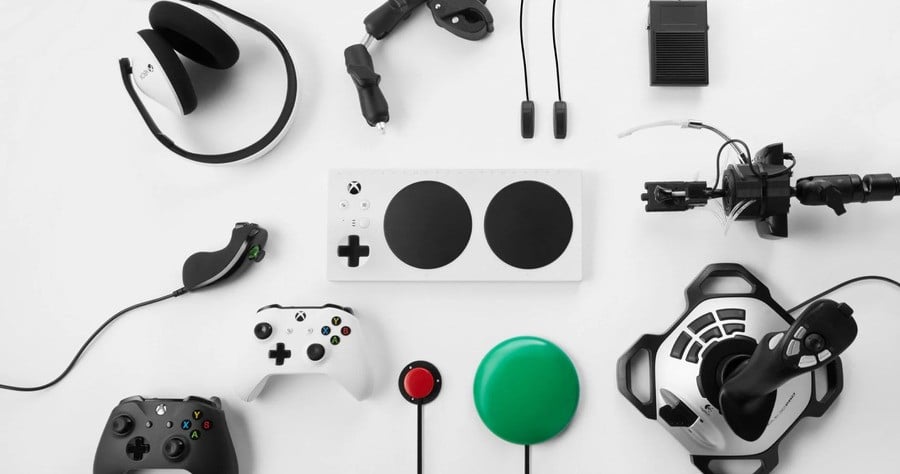
How much farther ahead, or what examples are there, from PlayStation and Microsoft that show the standards Nintendo should at least try to match.
At the very least Xbox has co-pilot mode, where you can have two controllers controlling the same video game. That allows for a situation where, if you are disabled and want to play a game but don’t have enough physical ability, you can have an able-bodied friend – or a disabled friend who has different abilities to you – to join forces and play a game. We see this a lot in parents who are able bodied and children who are disabled – or vice-versa – when maybe the child doesn’t have a lot of ability but can push one button.
Well now I can plug in my Forza game and I can control steering and gas, but they can control the brakes, or they can control the pit stop of shifting gears. They can have a part and be included in the fun. They’re participating and not just watching, and that participating, actively engaging in the experience, is what makes people feel fulfilled and joyful.
[Author’s note: Steven also highlighted button mapping on PlayStation here as a positive, albeit imperfect, solution. Nintendo Switch added this functionality in July 2024, over four years after the Switch launched and with little fanfare. That functionality is in place though, so that is a welcome, albeit limited, sign of progress. Steven has also explained that “the adoption rate of PlayStation accessibility has been much greater. I’m not sure why but people really don’t mention Switch remapping as a positive.]Nintendo has to stop with worrying about gadgets and gizmos. For a while we were using a gyroscope, then blowing into the controller, and these are cool gimmicks I suppose but if all you’re trying to do is play the video game you don’t care about these things, you’re worried about “can I push the main 6 or 8 buttons to play the game. Nintendo just needs to take some pages out of others’ books and reach out to places like AbleGamers, we would be happy to talk to them. And there are whole bunches of advocates out there, you don’t have to work with AbleGamers because some guy called Steve Spohn has chastised you too much in too many interviews. Fine, work with a different ally!
These are the things they can do to make things better. It wouldn’t take a lot of effort from them just to do the basic level stuff as an entry point.
We shared Steven Spohn’s remarks to Nintendo, which provided us with the following statement:
Nintendo endeavours to provide products and services that can be enjoyed by everyone. Our products offer a range of accessibility features, such as button-mapping, motion controls, a zoom feature, grayscale and inverted colours, haptic and audio feedback, and other innovative gameplay options. Nintendo’s software and hardware developers also continue to evaluate different technologies to expand this accessibility in current and future products.
We’d like to thank Steven Spohn for his time. He is once again teaming up with gaming fans, streamers and content creators for another Spawn Together campaign; you can read more about that here.
You can also learn more about AbleGamers and its work on its official website.